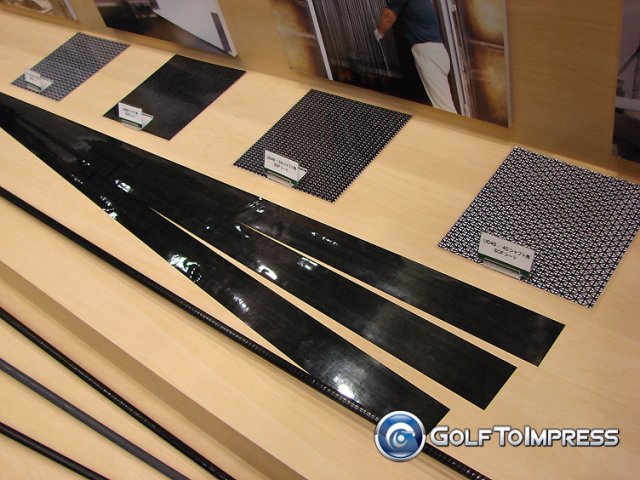We have been speaking with many Japanese Shaft manufactures recently and they have concerns about how some Americans abuse their golf clubs as well as the capabilities of a large portion of U.S club makers.
The .350 tip size is used in the states mostly to increase durability. Often golfers use the driver as support when reaching down to place the ball on the Tee. The larger and thicker tip walls ensure that the shaft can support more weight and abuse.
There is a negative aspect to the larger tip size and thicker wall, less tip flex… There is no evidence that .335 vs .350 provides any extra distance today but the latest and most recent technology is able to do so. This is a double edged sword because the shaft that has the thin tip wall is less durable and prone to breakage.
The other issue preventing the technology from being used more in the states is the amount of club makers who are brutal on the product. Of course there are exceptions like our very own Goodsie and few others but in most areas of the U.S the club maker is not accustomed to such expensive heads and shafts.
The recommended tip prep for these newer technologies require the club maker to sand extremely little off of tip section before installation. It is not suggested to use sanding machines as too much pressure will have a large effect on the shaft durability.
Combine a rough club maker with a tip section that has thin walls and its a recipe for disaster and warranty replacement issues for any OEM shaft brand that wants to use the new technology. It isn’t only U.S based club makers they are concerned about as there are club crafters in Japan who also don’t have the eye or take the care that is needed to install the next generation shafts properly.
These types of issues are preventing the advancement of shaft technology until a replacement for carbon is found that has the same properties and flex as carbon except with much more durability. Another thing to take into consideration is air and automobile travel, there may have to be new device created to protect the tip/hosel area from snapping during transport or the woods must be boxed up before you hit the road.
There are even future technologies further down the road that are able to increase distance by HUGE amounts but with swing speeds over 100mph mishits on the toe of a low torque shaft could snap it alone. We highly doubt those types of technologies will ever hit the market.
Please participate in our poll:
[poll id=”16″]



Well, it just shows you that golf club technology maybe needs to just slow down a bit. Yes, it is nice to try out a new shaft and see that it gives you more distance but who wants to be shouting “Fore!” because your driver head ends up flying towards the group ahead of you?
On the point about durability and air travel, you could always get a hard travel case to protect your fragile driver.
Mick Euan Tait
I would have to disagree on that one Mr. OnlineGolfTips, The golf industry has been repackaging technology as new for a very long time. Sometimes they market less technology as more technology.
Take a look at it this way, They make .350 for the U.S consumer market yet PGA Tour Pro’s will only play .335 because the tip feels more active. Golfers with enhanced feel notice more control with .335.
Now take .335 and give it thin walls and you have an even more active tip that can work into the shaft designers wishes better. Yes you lose durability but your club head will not fly off the shaft unless you have a novice clubmaker or you abuse your club.
Simply use it for it’s designed purpose, hitting balls not as a cane or stick to beat the dirt.
Just my opinion, thank you for yours!
Chris love the info. I have been having a problem with the durability of the Aldila shafts that I have put in my driver, Twice now i have had the shaft snap just above club head. my question is would i benefit from a .350 in my next shaft?